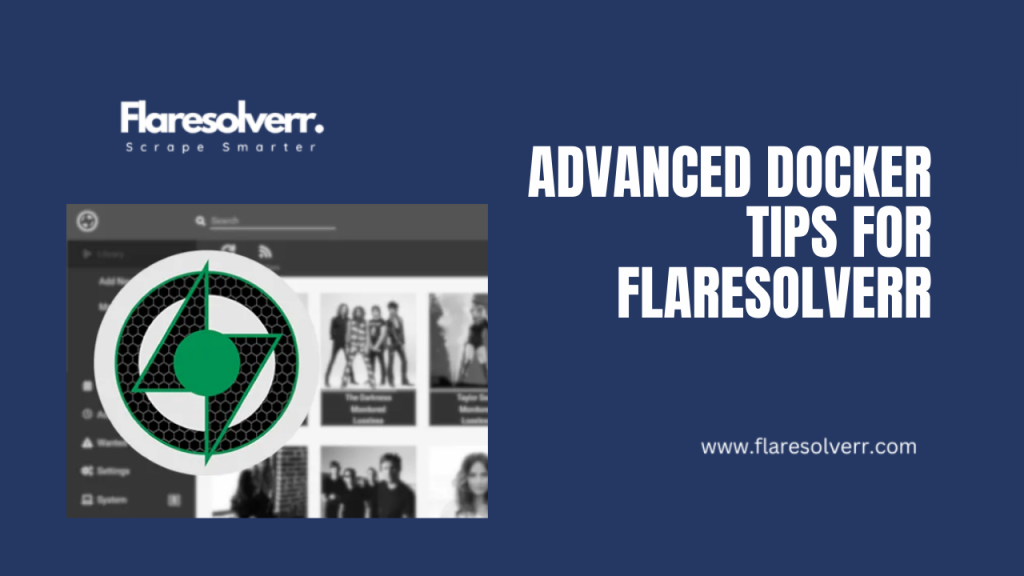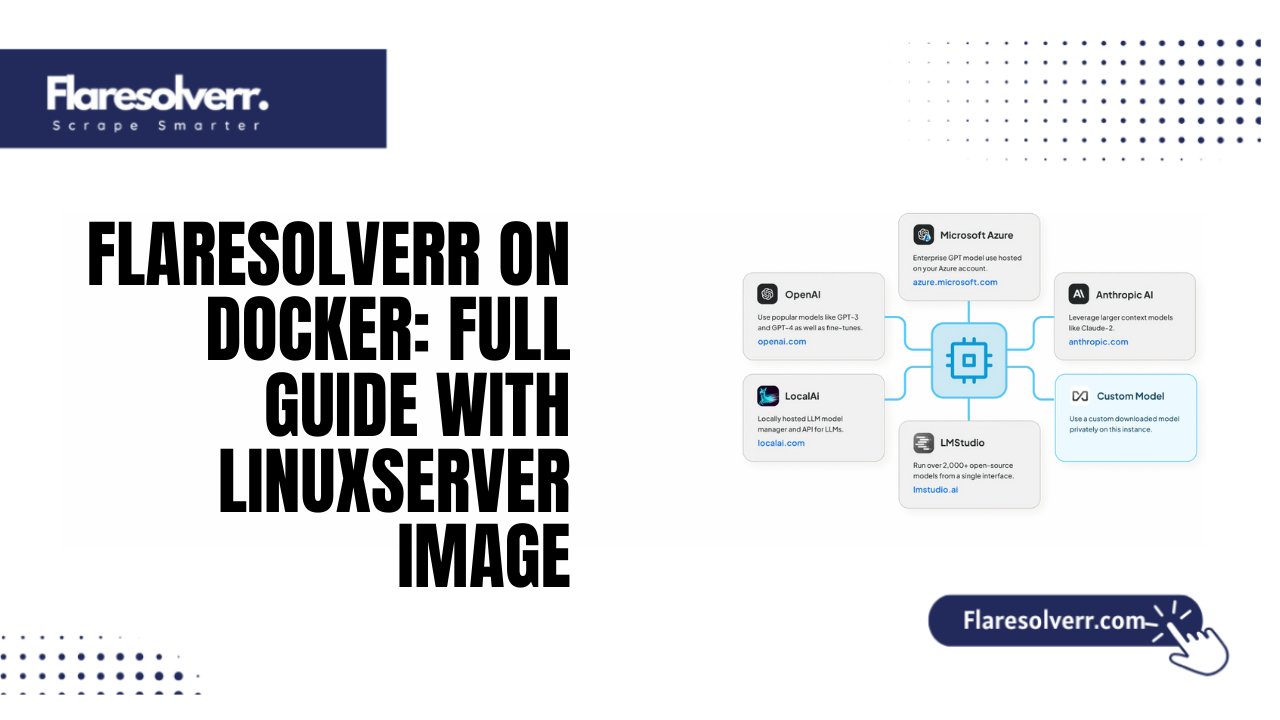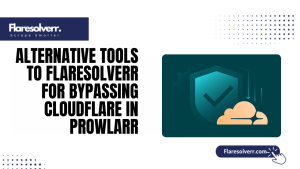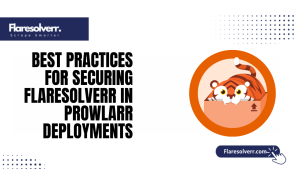Table of Contents
ToggleIntroduction
Many sites have anti-bot measures that stop ordinary scripts. FlareSolverr on Docker Linux handles these roadblocks, letting tools like Jackett, Radarr, or Sonarr run seamlessly. It’s basically the secret ingredient for uninterrupted scraping.
Benefits of running FlareSolverr in Docker
Docker adds a layer of simplicity and reliability for FlareSolverr Linux. You can run it anywhere, from a local Linux server to cloud environments, without worrying about dependencies or system conflicts. It also makes updates and backups easy.
What is FlareSolverr on Docker?
Ye service container me packaged hai, jisme required libraries aur setup already included hain.
Docker consistency across systems ensure karta hai aur deployment faster hota hai.
Installation details ke liye how to install FlareSolverr on Linux dekhein.
Overview of Dockerized FlareSolverr
Dockerized FlareSolverr Linux pre-configured aur ready-to-go hai. Ye Jackett aur other tools ke liye smooth integration allow karta hai. Isolation se conflicts kam hote hain aur management easy hota hai.
How it differs from standard installation
Standard installation me dependencies manually setup karni padti hain. Docker ise single container me package karke hassle eliminate karta hai. Portability better hoti hai, container easily move kiya ja sakta hai. Standard setup ke liye refer karein installation steps.
Advantages of using the LinuxServer image
The LinuxServer image is optimized for performance and stability. Using this image with FlareSolverr Linux gives you a tested, well-supported container that works reliably on Linux servers. It also includes built-in best practices for security, logging, and updates. Running FlareSolverr Linux via the LinuxServer image ensures smoother operation, fewer errors, and a setup that’s easier to maintain over time.
Setting Up FlareSolverr with LinuxServer Docker Image
Getting FlareSolver running in Linux Docker is easier than you think. With the proper preparation, you’ll have a container ready in minutes. This setup ensures a stable and consistent environment for your scraping tools, thereby reducing errors and conflicts. Using Docker also means you don’t need to worry about missing dependencies.
Prerequisites for Linux and Docker
Before starting, make sure you have a Linux system with Docker installed. FlareSolverr Linux runs smoothly on Ubuntu, Debian, or other popular distributions. Docker should be up to date to avoid compatibility issues. It’s also helpful to have basic knowledge of terminal commands.
While Docker makes things simpler, FlareSolverr Linux still requires setting up directories and ports properly. Having these ready ensures the container works perfectly.
Pulling the FlareSolverr image
To pull the image, use the command docker pull linuxserver/flaresolverr. This downloads the official LinuxServer version of FlareSolverr Linux, which is optimized for stability and performance. Once downloaded, the image is ready to be configured. Using the LinuxServer image ensures you get a tested setup with minimal effort, making FlareSolverr Linux on Docker fast, reliable, and secure.
Configuring environment variables
Environment variables let you customize FlareSolverr Linux without editing files inside the container. You can set the API port, time zone, or log levels to suit your setup. This step ensures the container runs exactly how you want. Properly configured environment variables make FlareSolverr Linux flexible and easy to integrate with Jackett or other tools.
Running FlareSolverr Container
Starting the container is as simple as running a Docker command. With FlareSolverr Linux, you can launch the service in the background, making it instantly available to other applications. Docker handles the environment and dependencies, so you don’t have to touch the system libraries. Running FlareSolverr Linux in a container ensures consistent performance and minimal troubleshooting.
Starting the container
Use docker run -d with the appropriate options to start your container. This command launches FlareSolverr Linux in detached mode, so it keeps running even if you close the terminal. Starting the container correctly is key to stable operation. It ensures the API is accessible for Jackett and other scraping tools without interruption, making FlareSolverr Linux seamless and reliable.
Mapping ports and volumes
- Ports allow FlareSolverr Linux to communicate with your scraping tools.
- Volumes save configuration and logs outside the container, so nothing is lost on updates or restarts.
- Correct mapping ensures smooth integration between the host and the container.
- By linking host folders and ports to the container, FlareSolverr Linux remains easy to maintain, backed up, and ready for long-term use.
Verifying container status
After setup, verify that the container is running using the’ docker ps’ command. This ensures FlareSolverr Linux is active, listening on the correct port and ready for connections. Verifying status early prevents frustration later.
You can also inspect logs using docker logs to view startup messages and troubleshoot any issues quickly. This makes FlareSolverr Linux Docker deployment reliable and stress-free.
Integrating FlareSolverr with Jackett and Other Tools
API URL API URL bridge ka kaam karta hai between FlareSolverr aur tools. Jackett me API URL paste karke communication setup hoti hai. Ye CAPTCHA bypass aur uninterrupted scraping ensure karta hai. Other extensions bhi seamlessly work karte hain.
Locating the API URL
The API URL is usually in the form http://localhost:8191. Inside Docker, this port is exposed to your host system for tools like Jackett to connect easily. FlareSolverr Linux defaults to port 8191, but it can be customized via environment variables during setup. Knowing the correct URL is crucial for connectivity.
Incorrect settings may lead to failed requests or blocked searches. With FlareSolverr Linux, double-checking the URL ensures a stable link with Jackett and other tools.
Connecting Jackett to Dockerized FlareSolverr
- In Jackett, navigate to the settings and paste the API URL from your FlareSolverr Linux container.
- This establishes the communication channel between Jackett and FlareSolverr Linux, allowing uninterrupted queries.
- After entering the URL, save the settings and test the connection.
- A successful test confirms everything is working smoothly.
- With FlareSolverr Linux connected, your scraping workflow becomes fast, reliable, and hassle-free.
Testing and troubleshooting the connection
Once connected, test by running a sample search in Jackett. If there’s an issue, check the Docker logs with’ docker logs container name to identify the problem. FlareSolverr Linux logs often show permission or network issues that can be fixed quickly.
Troubleshooting early prevents frustration later. Ensuring your API connection is stable keeps Jackett and other tools running efficiently with FlareSolverr Linux.

Advanced Docker Tips for FlareSolverr
Auto-restart aur logging customization possible hai. Resource allocation like CPU/memory usage optimize karein. Multiple tools efficiently handle kiye ja sakte hain without slowdowns. Container health monitor karke performance improve hoti hai.
Auto-restart and update strategies
Using Docker’s restart flag ensures FlareSolverr Linux restarts automatically after a crash or system reboot. This reduces downtime and keeps your scraping services consistent. Regularly updating the Docker image also keeps the container secure and stable.
By pulling the latest LinuxServer image for FlareSolverr Linux, you get bug fixes, performance improvements, and security patches.
Logging and monitoring container health
Monitoring logs with Docker logs helps track errors and performance issues. FlareSolver Linux logs display API requests, failures, or CAPTCHA bypasses, providing complete visibility. You can also use tools like Portainer or Docker stats to monitor CPU usage, memory usage, and container uptime. Keeping an eye on FlareSolverr Linux ensures it runs smoothly and efficiently at all times.
Resource management for better performance
Allocating sufficient CPU and memory to the container boosts FlareSolverr Linux performance. Heavy scraping tasks or multiple tools require careful resource planning to avoid slowdowns. You can limit resources per container in Docker or use Docker Compose to efficiently manage various services. Proper resource management keeps FlareSolverr Linux responsive and reliable.
Security and Maintenance Best Practices
Securing the API endpoint is critical. Only allow trusted tools to connect to FlareSolverr Linux. Using firewall rules or restricting access to localhost minimizes exposure. Regularly updating Docker images and clearing old containers or volumes keeps your system clean. Maintenance ensures FlareSolverr Linux stays fast, secure, and free of unnecessary clutter over time.
Securing the API endpoint
Ensure the API port is not exposed publicly unless necessary. For extra safety, configure a reverse proxy or VPN to control access to FlareSolverr Linux. Secured endpoints prevent unauthorized use and protect your system, allowing your scraping workflow to remain uninterrupted. Simple precautions go a long way in maintaining a safe environment.
Updating Docker image and dependencies
Pull the latest LinuxServer image regularly to get updates. This ensures FlareSolverr Linux has all bug fixes, feature enhancements, and security patches. Updating dependencies inside the container is also essential. It maintains compatibility with tools like Jackett and prevents errors during API requests, ensuring everything runs smoothly.
Cleaning up old containers and volumes
Removing unused containers and volumes prevents clutter and frees system resources. Docker makes cleanup simple with the’ docker rm’ and’ docker volume prune’ commands. Regular cleanup keeps FlareSolverr Linux Docker deployment neat and efficient. It ensures better performance, easier maintenance, and fewer unexpected issues in your scraping setup.
Conclusion
Running FlareSolverr Linux in Docker with the LinuxServer image makes web scraping smoother, faster and more reliable. Docker simplifies setup, ensures consistent performance, and allows seamless integration with tools like Jackett Radarr or Sonarr.
With proper configuration of the API URL resource management and security practices your containerized FlareSolverr Linux setup can handle multiple applications without interruptions. Keeping images updated and monitoring logs ensures long-term stability and reliability.
FAQs
Can FlareSolverr Docker run on any Linux distribution?
Yes! Docker abstracts the underlying OS, allowing FlareSolverr Linux to run on almost any Linux distribution. As long as Docker is installed and working, the container behaves similarly across Ubuntu, Debian, Fedora, and other operating systems.
Is root access required to run FlareSolverr Docker?
Not necessarily. While installing Docker initially may require root privileges, running the container itself can be done as a non-root user with proper permissions. This keeps FlareSolverr Linux safer and more secure.
How do I locate the FlareSolverr API URL in Docker?
The API URL is typically. If you mapped a custom port during setup, replace 8191 with your chosen port. Checking the container logs with docker logs <container_name> also shows the active API endpoint.
Can multiple applications use the same Docker container?
Absolutely! Multiple tools, such as Jackett, Radarr, or Sonarr, can connect to a single FlareSolverr Linux container using the same API URL. Ensure your container has sufficient resources to handle concurrent requests.
How to update FlareSolverr Docker image safely?
Stop the container first, then pull the latest LinuxServer image using’ docker pull’. Remove the old container and recreate it with the same environment variables. This keeps your FlareSolverr Linux setup up-to-date without losing configurations.
Will Dockerized FlareSolverr work with Jackett and Radarr?
Yes! Once you connect the API URL Jackett Radarr Sonarr or other extensions can communicate with FlareSolverr Linux seamlessly. The Docker setup ensures CAPTCHAs are bypassed efficiently.
How to troubleshoot container startup issues?
Check logs using docker logs container name to identify errors. Ensure ports aren’t blocked, environment variables are set correctly, and Docker has enough permissions. Restarting the container often resolves common startup glitches
Latest post:
- Alternative Tools to Flaresolverr for Bypassing Cloudflare in Prowlarr
- Best Practices for Securing Flaresolverr in Prowlarr Deployments
- Installing Flaresolverr via Docker vs Native on Different OSes
- tty not available Error in FlareSolverr How to Fix on Linux
- Is FlareSolverr Still Working? Latest Status and Fixes (2025 Update)












